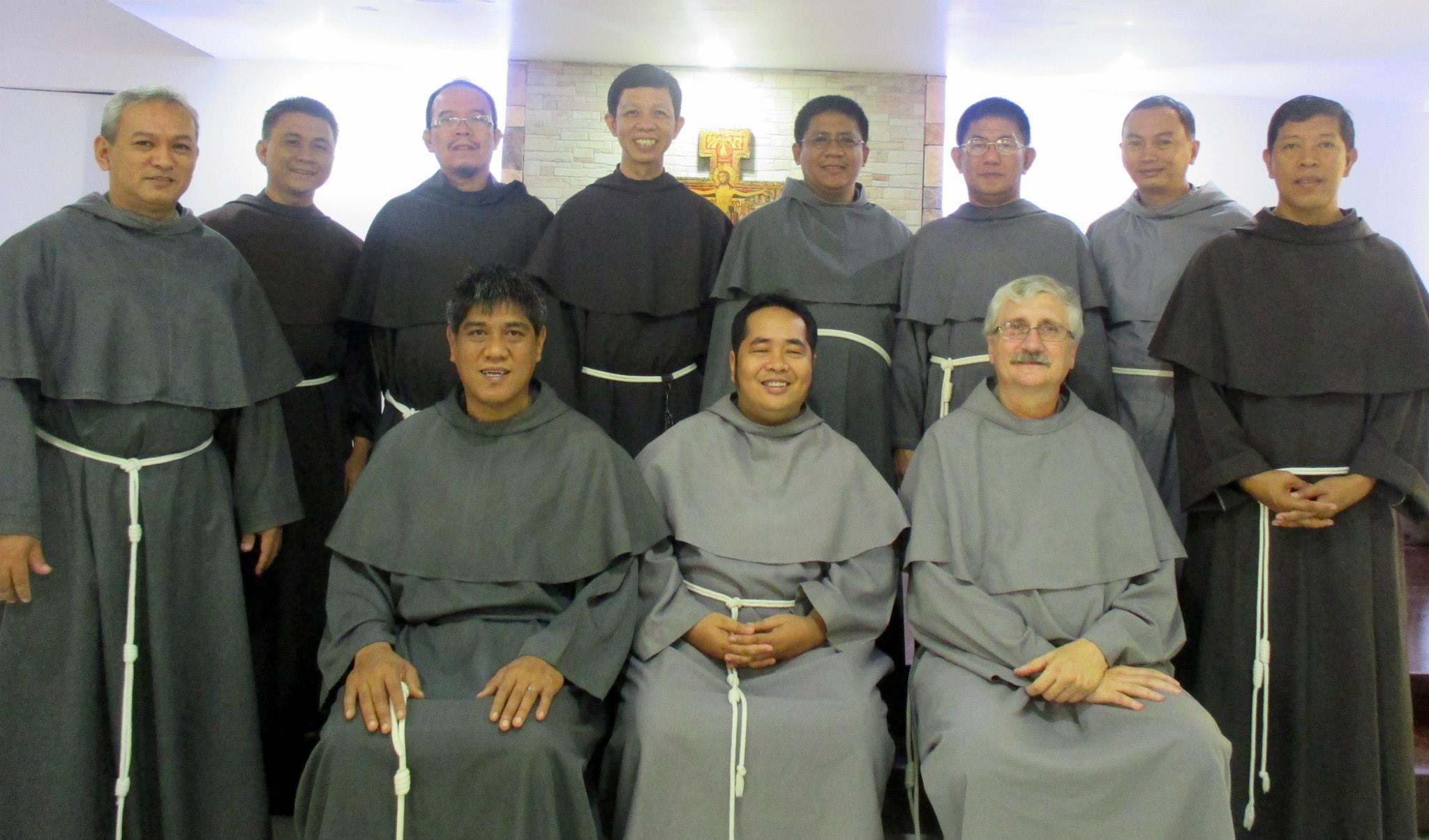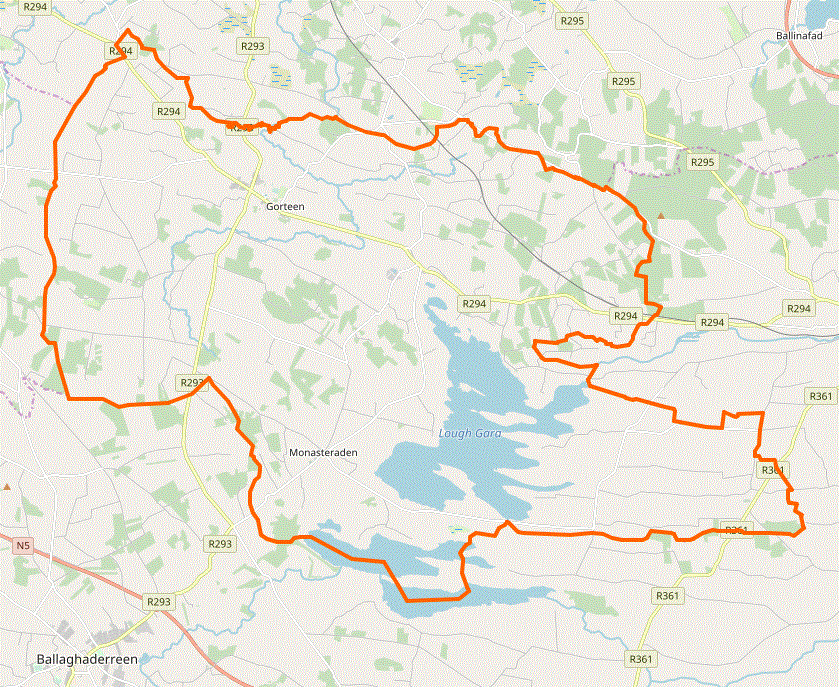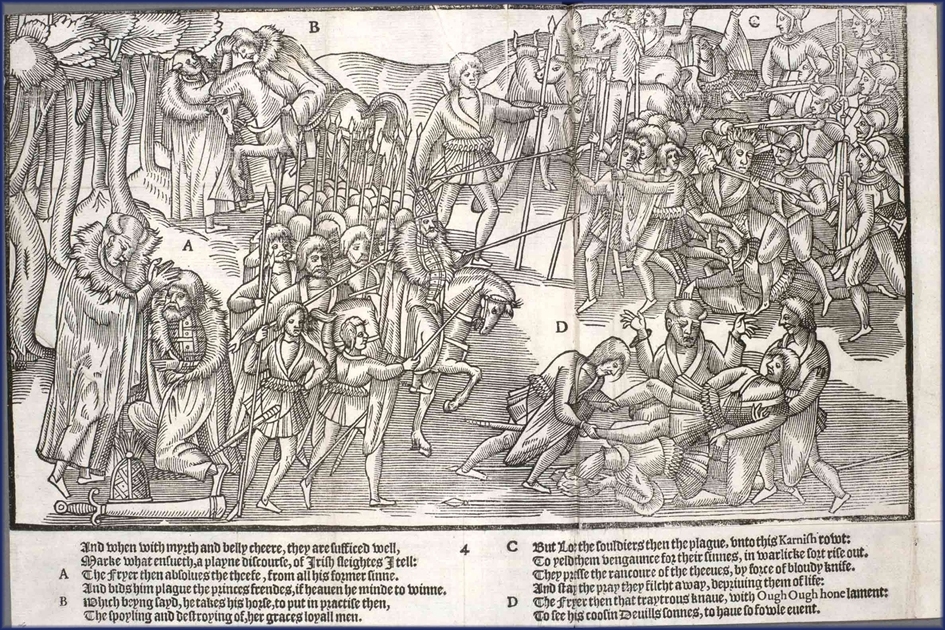|
Annals Of The Four Masters
The ''Annals of the Kingdom of Ireland'' () or the ''Annals of the Four Masters'' () are chronicles of Middle Ages, medieval Irish history. The entries span from the Genesis flood narrative, Deluge, dated as 2,242 Anno Mundi, years after creation to AD 1616. Publication delay Due to the criticisms by 17th-century Irish historian Tuileagna Ó Maol Chonaire, the text was not published in the lifetimes of any of the participants. Text The annals are mainly a compilation of earlier annals, although there is some original work. They were compiled between 1632 and 1636, allegedly in a cottage beside the ruins of Donegal Abbey, just outside Donegal (town), Donegal Town. At this time, however, the Franciscans had a house of refuge by the River Drowes in County Leitrim, just outside Ballyshannon, and it was here, according to others, that the ''Annals'' were compiled. [...More Info...] [...Related Items...] OR: [Wikipedia] [Google] [Baidu] |
Mícheál Ó Cléirigh
Mícheál Ó Cléirigh (), sometimes known as Michael O'Clery, was an Irish chronicler, scribe and antiquary and chief author of the ''Annals of the Four Masters'', assisted by Cú Choigcríche ÓCléirigh, Fearfeasa ÓMaol Chonaire, and Peregrinus ÓDuibhgeannain. He was a member of the ÓCléirigh bardic family, and compiled with others the ''Annála Ríoghachta Éireann'' (Annals of the Kingdom of Ireland) at Bundrowse in County Leitrim on 10 August 1636. He also wrote the ''Martyrology of Donegal'' in the 17th century. Background and early life Grandson of Tuathal Ó Cléirigh, a chief of the sept of Uí Chléirigh in Donegal, he was born in Kilbarron near Creevy, between Rossnowlagh and Ballyshannon on Donegal Bay. He was baptised Tadhg Ó Cléirigh, and was known by the nickname Tadhg an tSléibhe (meaning "Tadhg of the mountain"), but took the name of Mícheál when he became a Franciscan friar. He was the youngest of four sons of Donnchadh Ó Cléirigh, and his m ... [...More Info...] [...Related Items...] OR: [Wikipedia] [Google] [Baidu] |
The Oxford Companion To Irish Literature
''The Oxford Companion to Irish Literature'' is a book edited by Robert Welch and first published in 1996. Later abridged editions were published as ''The Concise Companion to Irish Literature.'' ''The Oxford Companion to Irish Literature'' surveys the Irish literary landscape across sixteen centuries with over 2,000 entries. Entries range from ogham writing to 1990s fiction, poetry, and drama. There are accounts of authors such as Adomnán, 7th-century Abbot of Iona, Roddy Doyle, Brian Friel, Seamus Heaney, and Edna O'Brien. Individual entries are provided for all major works, like Táin Bó Cúailnge - the Ulster saga reflecting the Celtic Iron Age - to Swift's ''Gulliver's Travels'', Edgeworth's '' Castle Rackrent'', Ó Cadhain's '' Cré na Cille'', and Banville's '' The Book of Evidence''. The book also presents some writers' historical contexts: * The Irish Famine of 1845-8, which provided a theme for novelists, poets, and memoirists from William Carleton to Patri ... [...More Info...] [...Related Items...] OR: [Wikipedia] [Google] [Baidu] |
Trinity College Dublin
Trinity College Dublin (), officially titled The College of the Holy and Undivided Trinity of Queen Elizabeth near Dublin, and legally incorporated as Trinity College, the University of Dublin (TCD), is the sole constituent college of the University of Dublin in the Republic of Ireland. Founded by Queen Elizabeth I in 1592 through a royal charter, it is one of the extant seven "ancient university, ancient universities" of Great Britain and Ireland. Trinity contributed to Irish literature during the Georgian era, Georgian and Victorian era, Victorian eras, and areas of the natural sciences and medicine. Trinity was established to consolidate the rule of the Tudor dynasty, Tudor monarchy in Ireland, with Provost (education), Provost Adam Loftus (bishop), Adam Loftus christening it after Trinity College, Cambridge. Built on the site of the former Priory of All Hallows demolished by King Henry VIII, it was the Protestant university of the Protestant Ascendancy, Ascendancy ruling eli ... [...More Info...] [...Related Items...] OR: [Wikipedia] [Google] [Baidu] |
Friar
A friar is a member of one of the mendicant orders in the Catholic Church. There are also friars outside of the Catholic Church, such as within the Anglican Communion. The term, first used in the 12th or 13th century, distinguishes the mendicants' itinerant apostolic character, exercised broadly under the jurisdiction of a superior general, from the older monastic orders' allegiance to a single monastery formalized by their vow of stability. A friar may be in holy orders or be a non-ordained brother. The most significant orders of friars are the Dominicans, Franciscans, Augustinians, and Carmelites. Definition Friars are different from monks in that they are called to the great evangelical counsels (vows of poverty, chastity, and obedience) in service to society, rather than through cloistered asceticism and devotion. Whereas monks live in a self-sufficient community, friars work among laypeople and are supported by donations or other charitable support. Monks or nuns m ... [...More Info...] [...Related Items...] OR: [Wikipedia] [Google] [Baidu] |
Franciscan
The Franciscans are a group of related organizations in the Catholic Church, founded or inspired by the Italian saint Francis of Assisi. They include three independent Religious institute, religious orders for men (the Order of Friars Minor being the largest contemporary male order), an order for nuns known as the Order of Saint Clare, and the Third Order of Saint Francis, a Third Order of Saint Francis#Third Order Regular, religious and Secular Franciscan Order, secular group open to male and female members. Franciscans adhere to the teachings and spiritual disciplines of the founder and of his main associates and followers, such as Clare of Assisi, Anthony of Padua, and Elizabeth of Hungary. Several smaller Franciscan spirituality in Protestantism, Protestant Franciscan orders have been established since the late 19th century as well, particularly in the Lutheranism, Lutheran and Anglicanism, Anglican traditions. Certain Franciscan communities are ecumenism, ecumenical in nat ... [...More Info...] [...Related Items...] OR: [Wikipedia] [Google] [Baidu] |
Ballyshannon
Ballyshannon () is a town in County Donegal, Republic of Ireland, Ireland. It is located at the southern end of the county where the N3 road (Ireland), N3 from Dublin ends and the N15 road (Ireland), N15 crosses the River Erne. The town was incorporated in the early 17th century, receiving a town charter in March 1613. Location Ballyshannon, which means "the mouth of Seannach's Ford (crossing), ford", after a fifth-century warrior, Seannach, who was reputedly slain there, lies at the mouth of the river Erne. Just west of the town, the Erne widens and its waters meander over a long sandy estuary. The northern bank of the river rises steeply away from the riverbank, while the southern bank is flat with a small cliff that runs parallel to the river. The town looks out over the estuary and has views of mountains, lakes and forests. History Archaeological sites dating as far back as the Neolithic British Isles, Neolithic period (4000 BC – 2500 BC) have been excavated in Ballyshann ... [...More Info...] [...Related Items...] OR: [Wikipedia] [Google] [Baidu] |
Brother (Catholic)
A religious brother (abbreviated Br. or Bro. as a title) is a lay male member of a religious institute or religious order who commits himself to following Christ in consecrated life, usually by the vows of poverty, chastity and obedience. Equivalent to a religious sister, a religious brother typically lives in a religious community and works in a ministry appropriate to his capabilities. A brother might practice any secular occupation. Some religious institutes are composed only of brothers; others are made up of brothers and clerics (priests or ministers, and seminarians). In some Christian groups, members refer to each other as "brother" or "sister". For example, Shakers use the title for all adult male members. History As monasticism developed in the early days of Christianity, most monks remained laymen, as ordination to ministry was seen as a hindrance to the monks' vocation to a contemplative life. Guided by the Rule of St. Benedict, the main lifestyle they followed ... [...More Info...] [...Related Items...] OR: [Wikipedia] [Google] [Baidu] |
Coolavin
Coolavin ( Irish ''Cúl ó bhFionn'') is a historical barony in south County Sligo, Ireland. It was created from the ancient túath of An Corann. The O'Garas were originally Lords of Coolavin. They were succeeded by the MacDermotts, a family of the Milesian clans A clan is a group of people united by actual or perceived kinship and descent. Even if lineage details are unknown, a clan may claim descent from a founding member or apical ancestor who serves as a symbol of the clan's unity. Many societie ..., who still claim their head to be the Prince of Coolavin to this day. References Baronies of County Sligo {{sligo-geo-stub ... [...More Info...] [...Related Items...] OR: [Wikipedia] [Google] [Baidu] |
Tighearna
A tiarna ( Irish), tighearna from the Old Irish tigerna, is a lord in the Gaelic world and languages. An Ard Tiarna is a "high lord", approximately equal in rank to a count or earl, although many of such higher rank still happen to prefer the title on its own. Tierney is an anglicised version of the Irish surname Mac Tighearnáin or O'Tighearnaigh, derived from the word. In later Gaelic sources, for example the Annals of the Four Masters, the term has also been frequently used to replace the title Rí (king) in cases where the authors or current tradition no longer regarded earlier regional and local dynasts as proper kings, even when they are styled such in contemporary sources. Thus when encountered the term is not always to be trusted. In fact this was part of a wider change in the understanding of kingship in the later Middle Ages, and even a living or recently deceased ''rí'' might find himself downgraded in certain sources. Examples * James Tuchet, 3rd Earl of Castlehave ... [...More Info...] [...Related Items...] OR: [Wikipedia] [Google] [Baidu] |
Gaelic Nobility Of Ireland
This article concerns the Gaelic nobility of Ireland from ancient to modern times. It only partly overlaps with Chiefs of the Name because it excludes Scotland and other discussion. It is one of three groups of Irish nobility, the others being those nobles descended from the Hiberno-Normans and those granted titles of nobility in the Peerage of Ireland. Legal status By the time of the Treaty of Limerick, almost all Gaelic nobles had lost any semblance of real power in their (former) domains. Today, such historical titles have no legal status in the Republic of Ireland. Unlike in Northern Ireland, which is a part of the United Kingdom, the Republic of Ireland does not confer titles of nobility under its constitution. From 1943 until 2003, some of the modern representatives of the Gaelic nobility obtained a courtesy recognition as Chiefs of the Name from the Irish government. The practice ended in 2003 following certain scandals (including a 'hoax' associated with Terence ... [...More Info...] [...Related Items...] OR: [Wikipedia] [Google] [Baidu] |
Fearghal Ó Gadhra
Fearghal Ó Gadhra (c. 1597 – after 1660), sometimes referred to as Farrell O'Gara, was lord of Coolavin, and patron of the ''Annals of the Four Masters''. Family background Ó Gadhra was the son of Tadhg mac Oilill Ó Gadhra of Coolavin, located in what is now south County Sligo. The family were ancient proprietors in Connacht; Geoffrey Keating gives their ancestry as follows: ''"Tadhg son of Cian, son of Oilill Olom, had two sons, namely, Connla and Cormac Gaileang. From Iomchaidh son of Connla comes O Cearbhaill, and from Fionnachta son of Connla comes O Meachair. From Cormac Gaileang son of Tadhg, son of Cian, comes O Eadhra and O Gadhra and O Conchubhair Ciannachta. The following are the territories they acquired, namely: Gaileanga, east and west; Ciannachta, south and north; Luighne, east and west."'' In the 12th century the Ó Gadhras were Kings of Sliabh Lugha, anciently referred to as Gailenga. The O'Hara's retained the name Luighne for their territory to the north ... [...More Info...] [...Related Items...] OR: [Wikipedia] [Google] [Baidu] |






